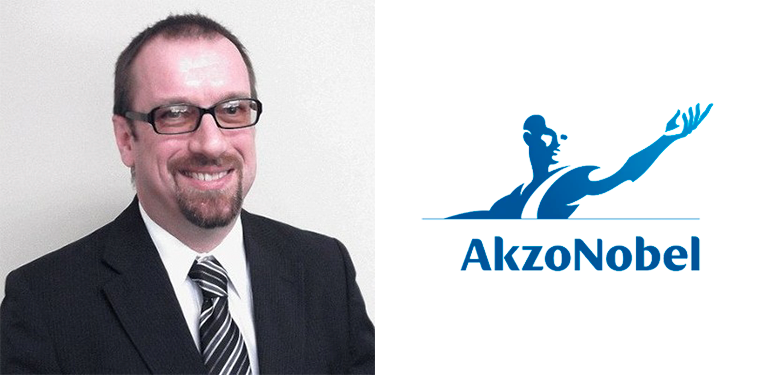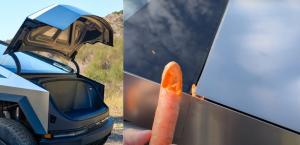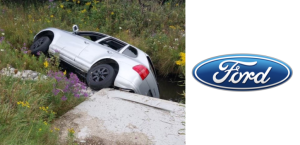Toronto, Ontario — AkzoNobel has unveiled its foundational steps toward achieving a Process Centred Environment in your facility.
During yesterday’s AkzoNobel webinar, Services Consultant Pat Ryan revealed the company’s 10 foundational blocks for adopting a Process Centred Environment (PCE). When combined, the foundation modules can work together to achieve optimized shop operations and a sense of ‘musketeerism’ within shop culture.
AkzoNobel’s PCE journey involves 10 steps, which can be tackled in any order.
The first block outlines AkzoNobel’s ‘5 S’ strategize; sort, set in order, sweep and shine, standardize and sustain.
The company suggests shops get a grip on an organizational gameplan by labelling unique bays (frame repair bay versus prepping bay) and tool boards and embedding such organization strategies in shop culture.
“With tool boards in place, you can easily glance and see exactly which tool is missing rather than searching,” says Ryan. “That can certainly help to chop out some delays in the process.”
In the next module, AkzoNobel says facilities should pursue visual management strategies by aiming to create a shop environment that communicates with technicians. It’s about more than simple informational signs, says Ryan; visual displays like repair status boards can help improve overall workflow by allowing employees to see exactly what stage a vehicle is at in the repair process.
When it comes to ensuring in-process quality, the motto, ‘Do it once, accurately,’ applies for AkzoNobel. Ryan says this foundational step is about quality control through self-inspection; train your employees to look at the job from a next-step perspective.
AkzoNobel suggests enforcing in-process quality by posting visual repair checkpoint standards in each bay, which can be customized to each facility.
Another foundational step targets tackling waste in the shop. Ryan says you should look to target The Eight Wastes:
- Transportation (movement of goods)
- Inventory (too much or too little, overabundance of cars on-site)
- Motion (frequency techs are delayed from job to find tool, etc.)
- Waiting (parts deliveries, repair queue)
- Overproduction (producing more than needed)
- Overprocessing (creating unnecessary work, doing too much)
- Defects (correcting errors)
- Underutilized human potential
Next in the PCE journey comes setting a clear standard. Ryan says the standardization process largely involves the documentation and building of standard operating procedure (SOP) manuals.
“We have customers that are building binders of everything they do, from cradle to grave,” says Ryan. “When they bring on a new employee—whether it’s an admin person or a technician—they’re encumbered to read all of that to learn how this shop runs a bit differently. It’s all about embedding the new way of doing things with your existing team and anyone who comes on board.”
AkzoNobel also encourages embracing the Japanese principle of Kaizen: adopting a culture of continuous improvement.
He says a good way for shops to pursue this strategy is sitting down with their employees to brainstorm simplified processes.
“We encourage a sticky-note strategy: everyone writes down the different steps in the repair process. Next, break down the process, analyze and begin removing steps. All of a sudden, we see a 32-step process slimmed down to 14 steps or fewer,” says Ryan.
Another philosophy to consider is Kanban—responding to upstream actions. Ryan says shops should look to establish a rhythm to take in as much volume as possible.
“If we look at a two-hour booth cycle as the drumbeat of the shop, we should aim to see vehicles moving from stage to stage according to the drumbeat. It’s about pulling the vehicles through the process at a steady pace rather than forcing them through.”
Improved maintenance schedules are another PCE key; enlisting employees to stay on top of inventory replenishment or equipment maintenance through checklists are simple tasks that can help ensure a steady flow.
“There’s nothing like heading into the booth to do a paint job and finding that you’re out of toner,” joked Ryan.
Continuous flow—an extension of Kanban—is another foundation. Ryan says the key to tackling this step is reducing backtracking in repairs and backlog of vehicles on-site in combination with the rhythm technique.
Finally, real-time administration is crucial in the road to a PCE, says Ryan. Tracking what happens, when it happens can be an absolute timesaver in a crunch.
“If something noteworthy happens in the repair process, make a note. You can always refer back to these lists in a pinch,” says Ryan. “Parts delays will often drive questions from adjusters, and this way you can always look back to answer these questions as efficiently as possible.”
To close out the webinar, Brady Chattington, operations manager at CSN Image Auto Body, hopped on the line to discuss his experiences in transitioning toward a PCE using AkzoNobel’s foundation.
“Once you implement the foundation blocks, you’ll wonder why you haven’t been operating this way for the last ten years,” said Chattington. “Just think of each building block as a brushstroke in a bigger picture and build your PCE at your own pace.”
A full replay of AkzoNobel’s webinar will be available in the coming days.





































